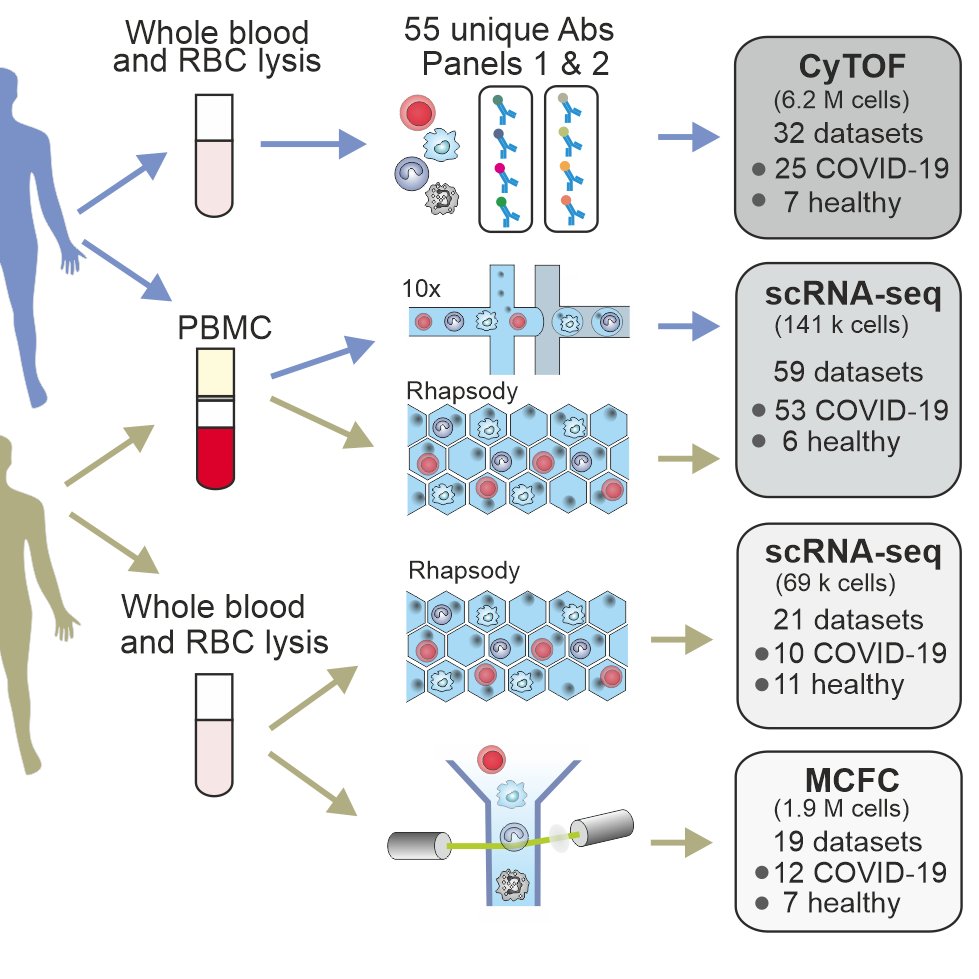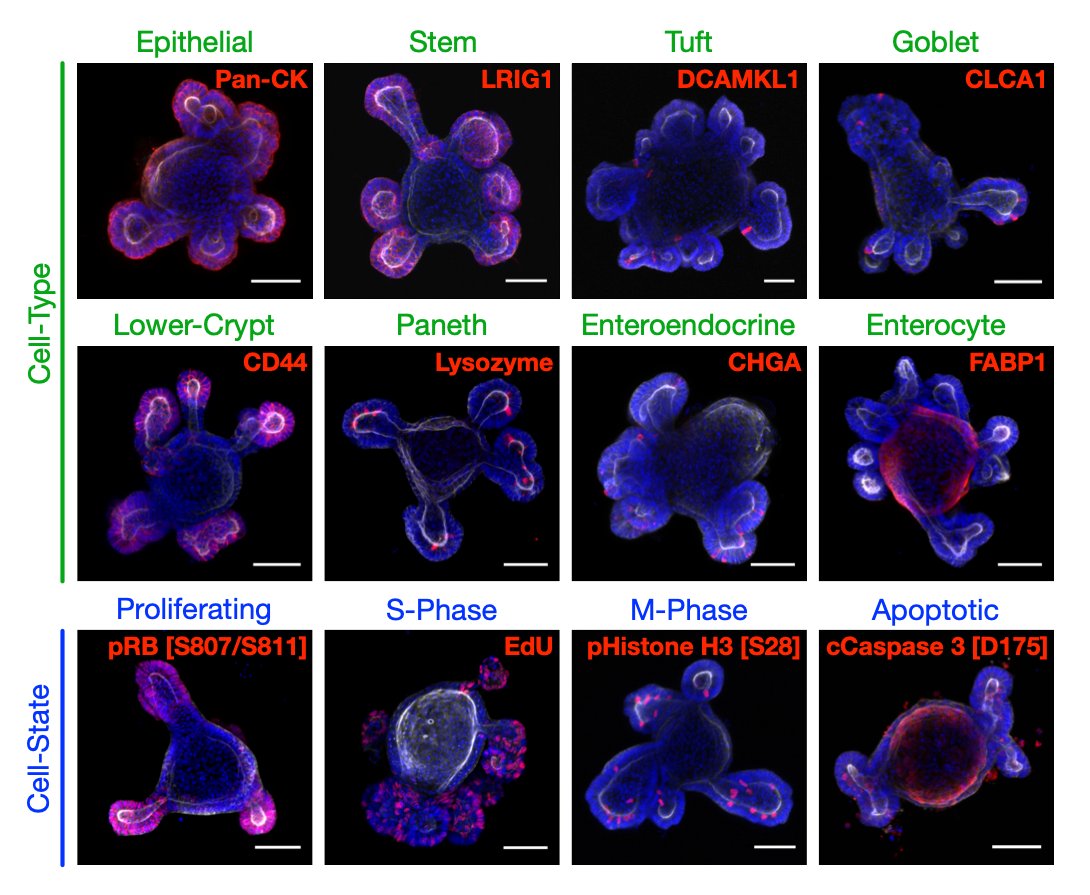Discover and read the best of Twitter Threads about #CyTOF
Most recents (7)
New @medrxivpreprint from work over 5 years with @tsanglab!
Our framework for integrating human population & single cell variations identified a "naturally adjuvanted" baseline immune system setpoint linked to more robust & immunogenic vaccine responses.
medrxiv.org/content/10.110…
Our framework for integrating human population & single cell variations identified a "naturally adjuvanted" baseline immune system setpoint linked to more robust & immunogenic vaccine responses.
medrxiv.org/content/10.110…
Early IFN-α signatures and persistent dysfunction are distinguishing features of NK cells in severe COVID-19, bit.ly/3teIlId, our latest team effort in #COVID19 research lead by Jacob Natterman @LabSchultze and @AschenbrennerAC out now @ImmunityCP. [1/n]
We performed a detailed characterization of natural killer cells in 205 patients from four independent cohorts using #scRNAseq, #MCFC and #CyTOF together with functional studies. [2/n]
We found elevated IFN-α plasma levels in early severe COVD-19 alongside increased NK cell expression of ISGs and genes involved in IFN-α signaling. [3/n]
Good morning science Twitter 😁🧬🔬 Our deep profiling of human IL-10-producing B cells by single-cell, highly multiplexed cytometry analysis is live on @biorxivpreprint! #bcellsrule
1/n
1/n
As all you immunology researchers know well, Tregs are the 'popular' lymphocytes when it come to regulatory immune cells. Yet, there is provocative evidence that regulatory B cells (#Bregs) also mediate anti-inflammatory function, primarily through production of #IL10.
2/n
2/n
Many knowledge gaps remain with respect to the optimal signals to induce Bregs, their phenotypic and functional diversity across healthy humans, and the potential of canonical B cell subsets to give rise to IL-10-producing cells.
3/n
3/n
Is it possible to predict signaling in single cell? 🤔
Our @attila_gbr with Marco Tognetti, @BodenmillerLab group, @tanevski, and @Sagebio designed a @DR_E_A_M challenge to crowdsource this question and our manuscript is out 🎊biorxiv.org/content/10.110…. Here is what we learnt🧑🎓
Our @attila_gbr with Marco Tognetti, @BodenmillerLab group, @tanevski, and @Sagebio designed a @DR_E_A_M challenge to crowdsource this question and our manuscript is out 🎊biorxiv.org/content/10.110…. Here is what we learnt🧑🎓

we used this biorxiv.org/content/10.110… rich dataset from the @BodenmillerLab and @Picotti_Lab labs: 80 millions of #singlecell from 67 #breastcancer cell lines, 36 measured markers, 5 kinase inhibitors, time courses #CyTOF + #proteomics , transcriptomics and genomics 

Suppressive myeloid cells are a hallmark of severe COVID-19 bit.ly/3hbrGyN. Our latest preprint provides insights into systemic immune responses to SARS-CoV-2 infection incl. profound alterations of the myeloid compartment associated with severe COVID-19. (1/n) #COVID19 

We combined two scRNA-seq techniques and sc-proteomics in PBMC and whole blood in two independent dual-center patient cohorts (n=46 + n=54 samples) to determine changes in immune cell composition and activation in mild and severe cases of COVID-19.(2/n) #scRNAseq #CyToF
Our study reports 1) time- and severity-dependent deviations of the monocyte compartment, particularly the identification of immunosuppressive monocytes at late stages in severe COVID-19, 2) the apprearance of immature and dysfunctional granulocyte subsets in severe disease.(3/n)
Extremely proud to share my lab’s first paper: ‘Cell-Type Specific Signaling Networks in Heterocellular Organoids’ out today in @naturemethods (1/14) nature.com/articles/s4159…
#Organoids are amazing biomimetic tissue models that contain multiple cell-types (e.g. stem, differentiated), each in their own cell-state (e.g. proliferating, quiescent, apoptotic). (2/14) 

While this complexity is what makes organoids so useful, it also makes them tricky to study. My lab wanted to use organoids to study cell-signalling in cancer – but bulk methods (e.g. LC-MS/MS) couldn’t easily provide cell-type and cell-state specific signalling data. (3/14)
Out today! New tool for everyone interested in immune monitoring using mass cytometry (#CyTOF). Provides a comprehensive reference panel to identify major immune cell lineages, functional subsets and checkpoint molecule expression.
Some highlights below:
cell.com/cell-reports/f…
Some highlights below:
cell.com/cell-reports/f…

No more spending several months to establish a panel! Our workflow is ready-to-go, consists of
commercially available reagents (@fluidigm) and is already titrated. Using this backbone, >98% of peripheral blood cells can be clearly identified by positivity for >4 antigens
More:
commercially available reagents (@fluidigm) and is already titrated. Using this backbone, >98% of peripheral blood cells can be clearly identified by positivity for >4 antigens
More:







